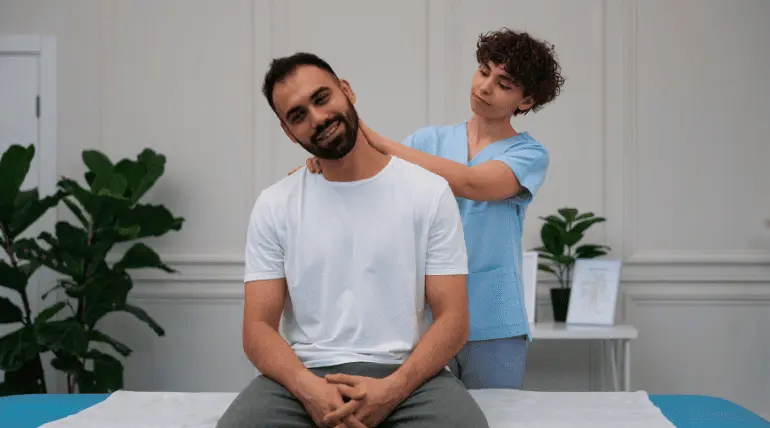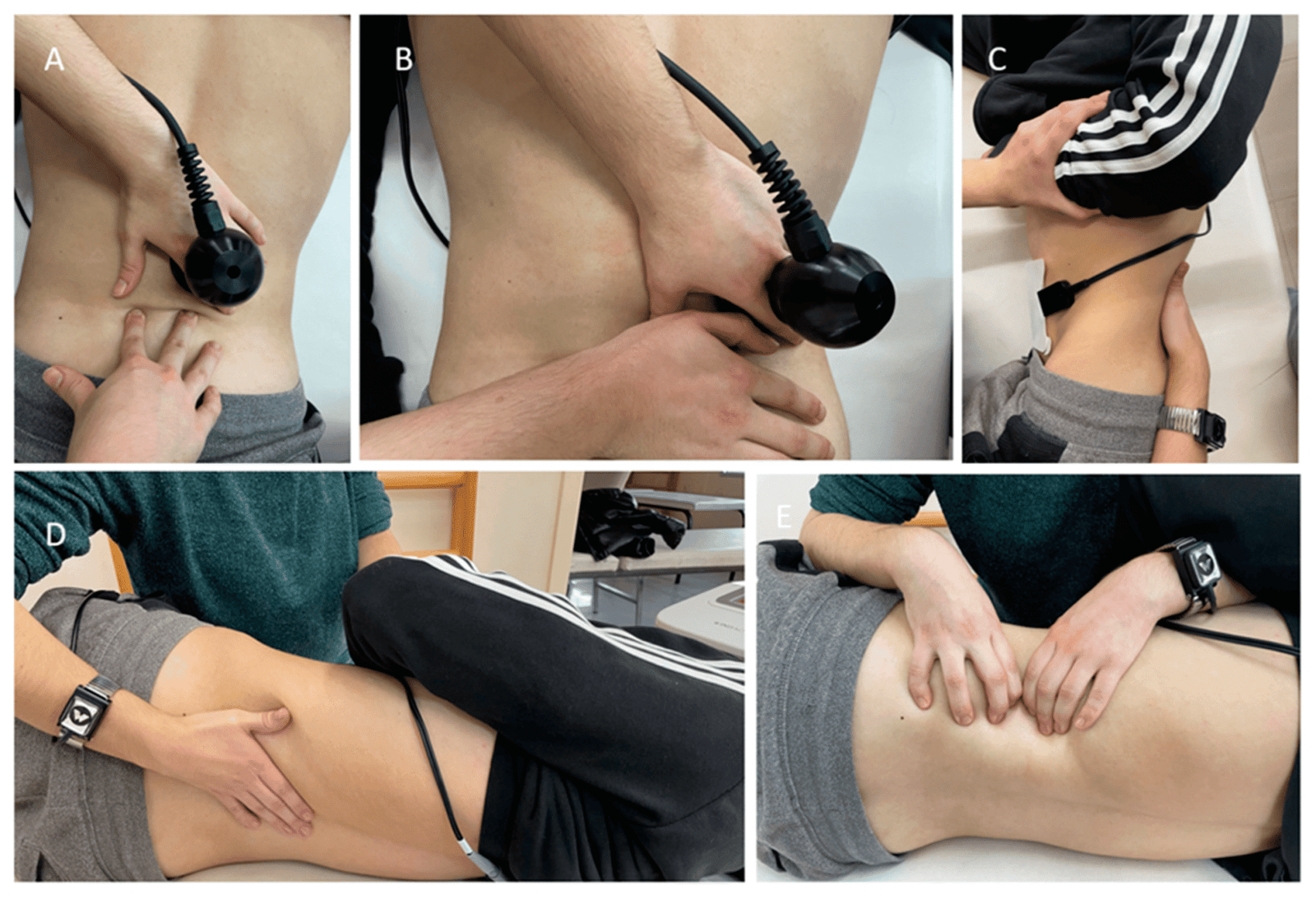In today’s modern work environment, prolonged sitting has
DEAD BUTT SYNDROME | GLUTEAL AMNESIA
ROLE OF PHYSIOTHERAPY IN MANAGING DEAD BUTT SYNDROME
In today’s modern work environment, prolonged sitting has become increasingly common, especially among individuals with desk-based jobs. However, excessive sitting has been associated with a range of serious health issues, including heart disease, diabetes, obesity, etc. This highlights the importance of incorporating regular movement into our daily routines.
One lesser-known consequence of prolonged sitting is a condition known as Dead Butt Syndrome, or gluteal amnesia. This occurs when the gluteal muscles become inactive or fail to engage properly due to extended periods of inactivity, potentially leading to muscular imbalances and discomfort.
WHAT IS DEAD BUTT SYNDROME?
Dead Butt Syndrome (DBS) occurs when the gluteus medius— one of the three primary muscles of the buttocks—fails to function properly. This condition often develops from prolonged periods of sitting, whether at a desk, on the couch, or during long drives.
Surprisingly, even individuals who are generally active can experience Dead Butt Sybdrome (DBS) if they do not specifically engage and strengthen their gluteal muscles. In fact, this type of muscle imbalance is also common in highly active people who have dominant quadriceps or hamstrings, which can overshadow glute activation.
The gluteus medius plays a crucial role in stabilizing the pelvis. When it underperforms, the body compensates through other muscles and joints, potentially leading to lower back, hip, knee, or even ankle pain.
Physiologically, when one muscle around a joint contracts, it sends a signal for the opposing muscle to relax—a process known as reciprocal inhibition. Prolonged sitting causes the hip flexors to remain in a contracted state while the glutes remain inactive. Over time, this leads to gluteal weakening and dysfunction.
CAUSES OF Dead Butt Syndrome (DBS) :
1. Prolonged Sedentary Behavior:
– Extended periods of sitting (e.g., at a desk, in a car, or on the couch) cause the hip flexors to remain in a shortened, tightened position which causes dead butt syndrome.
– Simultaneously, the gluteal muscles—particularly the gluteus medius—become lengthened and underutilized, leading to deactivation over time.
2. Muscle Imbalances :
– Muscle imbalance is one of the major cause of Dead Butt Syndrome as over-reliance on stronger muscles (e.g., quadriceps or hamstrings) can reduce gluteal engagement, particularly during movement or exercise.
– This imbalance alters normal movement mechanics and can place strain on surrounding joints and muscles.
3.Poor Posture and Ergonomics:
– Sitting with poor posture or in ergonomically unsupportive environments further inhibits gluteal activation and proves to be the major cause of dead butt Syndrome.
– Pelvic misalignment and spinal stress may result, exacerbating functional limitations.
4. Lack of Targeted Gluteal Strengthening:
– General physical activity may not be sufficient to activate or strengthen the glutes.
– Without specific glute-focused exercises, the muscles remain underdeveloped and prone to dysfunction.
5. Repetitive High-Impact Activity Without Recovery:
– Athletes (e.g., runners, dancers) who engage in repetitive lower-body movements are at increased risk if their glutes are not properly conditioned.
– The strain from high-impact activities can overwhelm weakened gluteal tendons and muscles, especially when combined with extended sitting during rest periods.
Symptoms of Dead Butt Syndrome (Gluteal Amnesia)
- Gluteal numbness or weakness: A dull or tingling sensation in the buttocks due to prolonged inactivity or nerve compression.
- Pain radiating down the leg (sciatica-like symptoms): Shooting pain may travel from the hip down the thigh or lower leg, often mimicking sciatica.
- Hip bursitis: Inflammation of the bursa near the hip joint, leading to swelling, tenderness, and pain during movement.
- Calf discomfort or cramping: A secondary effect of altered gait mechanics and muscle compensation.
- Tightness in the hip flexors and thighs: Resulting from prolonged sitting and gluteal underuse.
- Pain or stiffness in the hips, lower back, or knees: Often caused by biomechanical imbalances and compensatory overloading of surrounding joints.
- Difficulty with functional movements: Such as walking uphill, climbing stairs, or rising from a seated position.
- Muscle fatigue or instability : during activities requiring lower-body strength or endurance.
- Reduced range of motion in the hip joint due to tight surrounding musculature and weak gluteal support.
- Altered gait patterns: Such as limping or uneven stride, often unconscious, due to gluteal inactivity.
The Role of Physiotherapy in Managing Dead Butt Syndrome (Gluteal Amnesia)
Physiotherapy plays an important role in the management of Dead Butt Syndrome (DBS).
Physiotherapy offers a comprehensive approach to address these issues by improving muscle function, restoring posture, and reducing pain.
1. Comprehensive Assessment
The first step in physiotherapy management is a thorough assessment to evaluate:
- The strength and activation of the gluteal muscles, with particular focus on the gluteus medius and maximus.
- The presence of muscle imbalances and postural deviations, which may be contributing to the condition.
- Gait abnormalities or difficulties with functional movements such as stair climbing or walking.
- Range of motion limitations in the hip, pelvis, and lower back.
This detailed evaluation enables the physiotherapist to develop a personalized treatment plan targeting the root causes of DBS.
2. Gluteal Muscle Activation and Strengthening
One of the primary goals of physiotherapy is to retrain and strengthen the gluteal muscles, especially the gluteus medius, which plays a crucial role in stabilizing the pelvis.
Physiotherapists utilize a variety of targeted exercises to reactivate these muscles:
- Glute bridges: To engage the glutes and improve pelvic stability.
- Clamshells and hip abductions: To isolate and activate the gluteus medius.
- Squats and lunges: To promote overall lower body strength and enhance functional movement.
- Resistance band exercises: To challenge the glutes in different planes of motion and build strength progressively.
3. Postural and Movement Correction:
Correcting poor posture and dysfunctional movement patterns is crucial in managing DBS. Physiotherapists provide guidance on:
- Pelvic alignment: Ensuring that the pelvis is in a neutral position during sitting and standing to reduce strain on the glutes.
- Core stabilization: Strengthening the core to provide support for the pelvis and improve overall movement efficiency.
- Gait retraining: Teaching proper walking mechanics to ensure that the glutes are properly engaged during ambulation and functional tasks, thus preventing compensatory overuse of other muscle groups.
4. Manual Therapy and Soft Tissue Techniques
To address muscle tightness and tension in areas that may be compensating for weak glutes, physiotherapists may utilize various manual therapy techniques:
- Soft tissue mobilization: To release tight muscles, particularly in the hip flexors, quadriceps, and hamstrings, which are often overactive in individuals with DBS.
- Myofascial release: To reduce fascial restrictions around the hips, lower back, and thighs.
- Trigger point therapy: To address specific points of muscle tension that may be contributing to pain and discomfort.
- Joint mobilizations: To improve mobility in the hip, lumbar spine, and pelvis, enhancing overall functional movement.
These techniques help to alleviate pain, improve flexibility, and restore proper muscle function.
5. Flexibility and Mobility Training:
Restoring mobility in the hip and lower back is vital in treating DBS.
Physiotherapists recommend specific stretching routines to address tight hip flexors, hamstrings, and other associated muscles:
- Hip flexor stretches: To counteract the effects of prolonged sitting and improve hip extension.
- Hamstring and quadriceps stretches: To maintain flexibility in the lower limbs and support proper gait mechanics.
- IT band stretches: To reduce tension along the outer thigh and pelvis, which can affect hip function.
In addition, dynamic stretches and mobility exercises can be incorporated to promote fluid movement during functional activities.
6. Education and Lifestyle Modifications
Physiotherapy is not only about treating the symptoms of DBS but also preventing future occurrences. Key educational components include:
- Ergonomic advice: Physiotherapists can provide recommendations for improving posture and workstation setup to reduce prolonged sitting and prevent muscle imbalances.
- Activity modification: Encouraging patients to incorporate regular movement breaks throughout the day, such as standing, walking, or performing gentle stretches, to counteract the effects of a sedentary lifestyle.
- Home exercise programs: Providing patients with tailored exercises to maintain gluteal strength, flexibility, and overall mobility outside of clinical sessions.
- Preventive strategies: Educating patients on the importance of balanced physical activity that engages all muscle groups to avoid compensatory movement patterns that may lead to DBS in the future.
7. Pain Management
For patients experiencing significant discomfort or inflammation, physiotherapists may incorporate modalities to help manage pain and accelerate recovery, such as:
- Cryotherapy or heat therapy: To reduce inflammation and muscle stiffness.
- Electrical stimulation: To promote muscle activation and reduce pain.
- Taping techniques: To provide additional support to the glutes and hips during recovery.
Physiotherapy offers a comprehensive and evidence-based approach to managing Dead Butt Syndrome (DBS) by addressing its underlying causes, such as gluteal weakness, poor posture, and muscle imbalances. Through a combination of strengthening exercises, manual therapy, mobility training, and lifestyle modifications, physiotherapists help patients regain optimal muscle function, reduce pain, and prevent recurrence. Early intervention and adherence to a structured physiotherapy plan are essential for achieving long-term recovery and improving quality of life.







